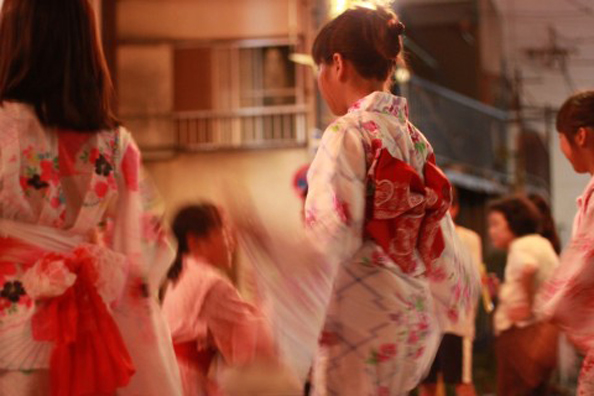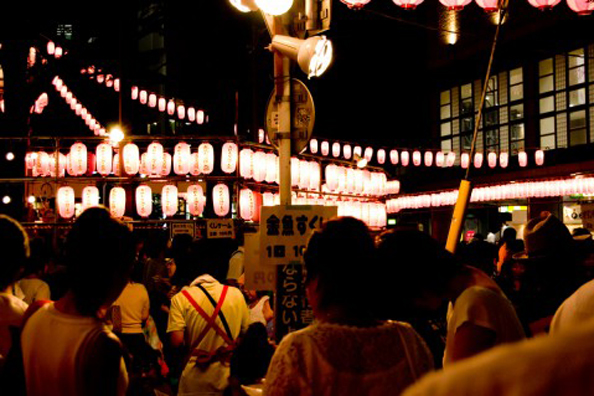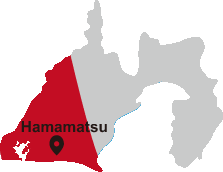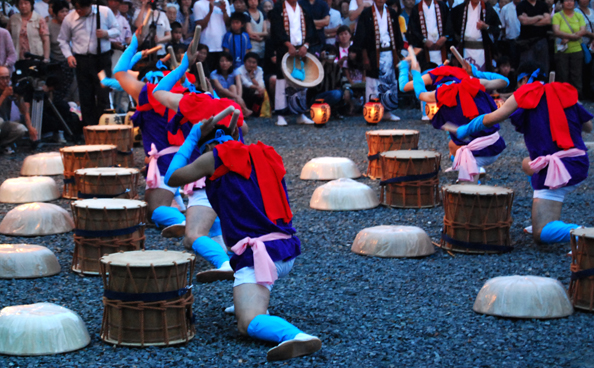

In Japan, there is a period of time, as well as certain events, where people pray for the spirits of their deceased relatives and ancestors to be able to obtain Buddhahood without suffering. There are many events held around the 15th of the 7th month of the old lunar calendar, held to generally correspond to the four-day period between August 13th and 16th. Parts of the Kantō region hold Obon to be from July 13th to 16th, and in Hamamatsu as well, Obon is held in July or August depending on the area.
"Bon-Odori," as the name suggests, refers to a dance (odori) held during Obon. One of the folk arts held dear by Japanese, there are various explanations, but the dance is performed all over Japan in order to receive spirits and send them off again.At the present day, the religious aspect of the event has been mostly lost, and the dance is held as an event to liven up summer festivals and so on.
There are many cases in which the movements of the dances passed down from long ago are made to coordinate with lyrics describing such actions as "harvesting the rice" or "scooping the mud." This gives the dance the unique quality of being easy to remember, meaning anyone can easily participate. Dress can consist of anything, but since the choreography is based around yukata, people can often be seen wearing it while dancing.
Just like in ages past, Bon-Odori, with its emphasis on rhythm and lively movement, continues to liven up the summer nights of the present day as well.
"Bon-Odori," as the name suggests, refers to a dance (odori) held during Obon. One of the folk arts held dear by Japanese, there are various explanations, but the dance is performed all over Japan in order to receive spirits and send them off again.At the present day, the religious aspect of the event has been mostly lost, and the dance is held as an event to liven up summer festivals and so on.
There are many cases in which the movements of the dances passed down from long ago are made to coordinate with lyrics describing such actions as "harvesting the rice" or "scooping the mud." This gives the dance the unique quality of being easy to remember, meaning anyone can easily participate. Dress can consist of anything, but since the choreography is based around yukata, people can often be seen wearing it while dancing.
Just like in ages past, Bon-Odori, with its emphasis on rhythm and lively movement, continues to liven up the summer nights of the present day as well.
WE RECOMMEND!!
Enshū Dai-nenbutsu
Enshū Dai-nenbutsu
Enshū Dai-nenbutsu is a folk performance that is nationally recognized as a "significant intangible folk cultural asset of Japan." The performance is held in and around Hamamatsu during o-bon (the Japanese Festival of Souls) in July or August and is an iconic summer tradition of the Enshū region.
2022.6.22 update
Content may be subject to change after publication. Please also note that we are not accountable for loses and damages that may occur as a result of said changes.
Content may be subject to change after publication. Please also note that we are not accountable for loses and damages that may occur as a result of said changes.






